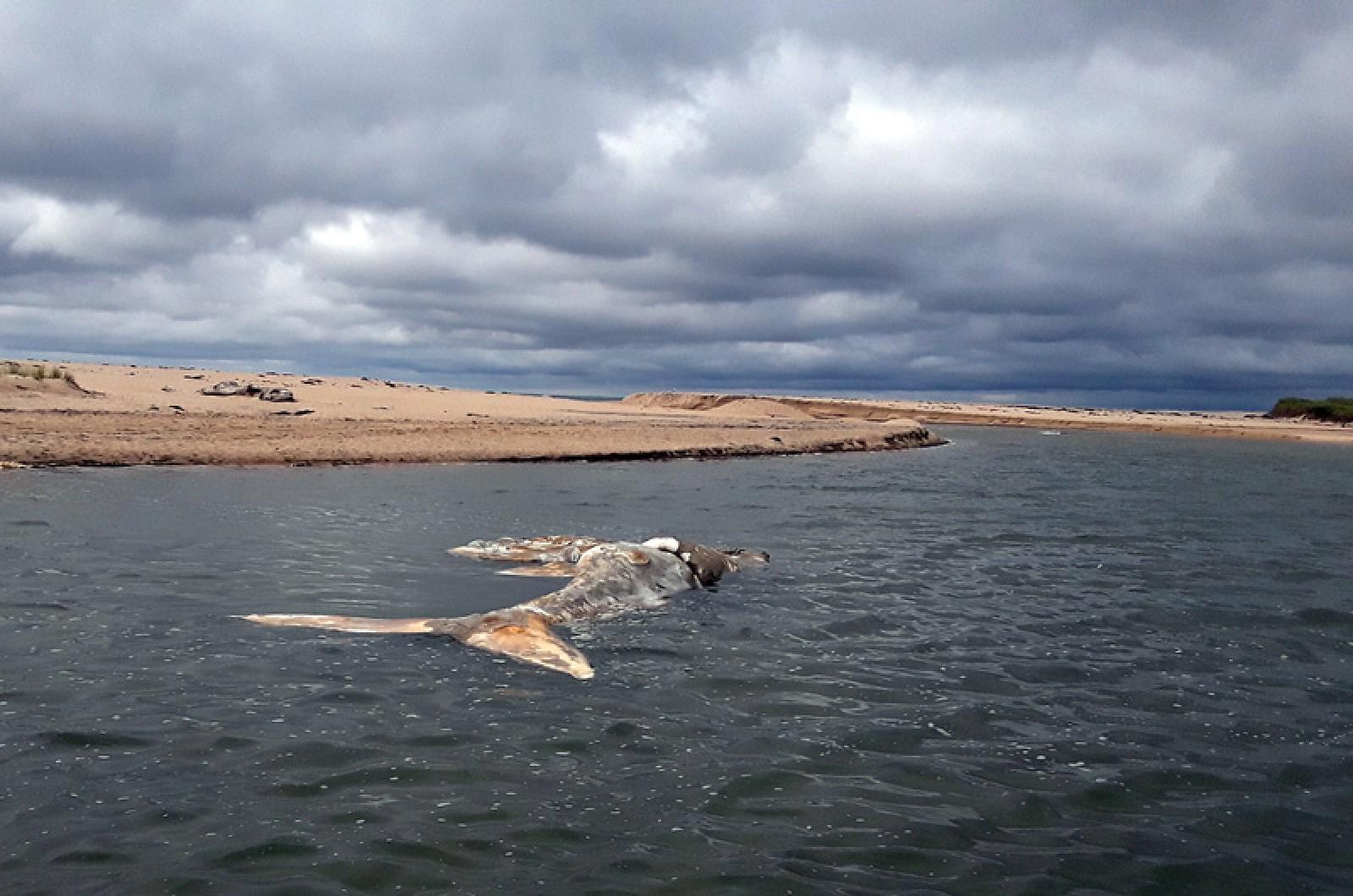A decomposing North Atlantic right whale carcass recovered from the Edgartown Great Pond Tuesday morning likely died from entanglement with fishing gear, scientists said.
A team from the International Fund for Animal Welfare visited the Island Wednesday to examine a 20-foot-long segment of the right whale that was discovered earlier this week floating in the Edgartown Great Pond. Fishermen spotted the dead whale offshore but within sight several days earlier, and by Tuesday it drifted into the great pond, likely coming through an opening to the sea when the tide was coming in.
Edgartown shellfish constable Paul Bagnall described the carcass as quite decomposed, with the tail and about two-thirds of the body remaining. “The right flipper is totally decomposed down to the bone, and nothing is left of the head," he said.
With assistance from the Martha’s Vineyard Land Bank, the carcass was secured on the beach.
North Atlantic right whales are a critically endangered species, and a spate of recent right whale deaths on the East Coast has led to heightened interest and concern.
According to the Marine Mammal Commission, four right whale deaths were documented in the Atlantic in 2016. In 2017, between June 7 and August 2, 10 right whales were found dead in the Gulf of St. Lawrence. One carcass was found off Barnstable in April.
The International Fund for Animal Welfare team arrived on the scene Wednesday morning, joined by a biologist from the Northeast Fisheries Science Center who studies right whales.
Misty Niemeyer, necropsy coordinator for IFAW, said they were called to respond on behalf of the National Marine Fisheries Service because the service does not have responders on-Island.
The IFAW team conducted an external examination of the carcass, took measurements and metrics, removed tissue and bone samples, and cut into the whale to look for signs of trauma. The remains were later buried on the beach with help from Mr. Bagnall, a team from the Land Bank, and Steve Handy of Handy Trucking and Bobcat Service, who operated an excavator to bury the whale.
Despite the state of the carcass, Ms. Niemeyer said her team was able to determine the whale was a relatively young male. She estimated that the animal would have been about 26 or 27 feet long.
Ms. Niemeyer said that despite the whale’s condition, there were some findings that indicated fishing gear entanglement as a possible cause of death. Entanglement and boat strikes are two common causes of right whale deaths. Ms. Niemeyer added that her team will analyze the samples they collected in an attempt to confirm the cause of death.
They will also send muscle and bone samples to researchers in Canada that study the genetics of right whales. This will help to determine whether this is a known animal in the right whale population or a new animal.
Ms. Niemeyer said it is likely a new animal, which would make it the 12th right whale death in 2017 —one of the highest right whale death numbers recorded in a single year.
Only five right whale calves were born this year. “We are very concerned about what that means for the population,” she said.
Ms. Niemeyer said it is important to work on reducing vessel strikes and entanglements in fishing gear through collaboration between the fishing industry, regulatory agencies and researchers. Information gained from the whale that washed up on the Vineyard this week can also determine how best to protect the species, she said.
Sightings of dead or stranded marine mammals should be reported to the National Oceanic and Atmospheric Administration Marine Mammal and Sea Turtle Stranding and Entanglement Hotline at (866)-755-6622.







Comments (4)
Comments
Comment policy »